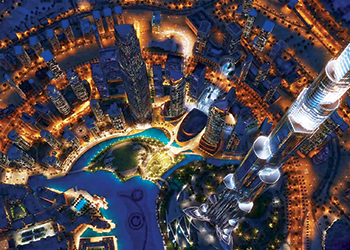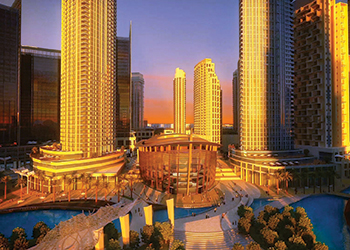Autodesk 3D solution cuts time, cost, flaws
01 April 2016
With the emergence of mega projects across the region, companies in the construction industry do not have time for traditional trial-and-error practices as these would lead to costly delays.
To avoid these situations, companies are now looking to using 3D and visualisation solutions, which not only saves cost and time but also ensure that project flaws are dealt with properly and remedied in advance with a sound and secure alternative, according to Naji Atallah, head of AEC and manufacturing, Autodesk Middle East.
“An example of the strategic use of these new solutions can be seen in the construction of the Dubai Opera House, which is a 2,000-seat, multi-format venue for opera, theatre, concerts, art exhibitions, sports events and seasonal programmes,” he says.
Strategically located near Dubai’s Burj Khalifa, the world’s tallest tower, the Opera House is surrounded by large lakes, fountains and an array of mixed-use development. The area was named the Opera District and is positioned to become a cultural destination in downtown Dubai – complete with luxury hotels, residential apartments, a retail plaza, art galleries, waterfront promenades, recreational spaces and parks.
“During its pre-construction phase, GRAFF3D presented scale visualisation of the district by using Autodesk 3ds Max Design software. The solution helped produce model-based, high-resolution renderings and cinematic-quality 3D project visualisations of the development. These visualisations were later used to promote and market the area to potential investors, businesses and residents, he explains.
With this case study in mind, Atallah says, the use of 3D and visualisation brings in the following benefits and advantages:
• Improved understanding of the project;
• Utilisation of the final designs as an effective marketing tool to help attract potential investors, partners and stakeholders;
• Reduction in cost and time, ultimately resulting in improved productivity and enhanced efficiencies; and
• Faster approval from governments that mandate building information modelling (BIM) and design software use.
 |
|
The 3D software gives better project understanding. |
The industry has also seen a rise in the number of companies offering comprehensive professional 3D visualisation and animation services. These companies, which are staffed with highly skilled, creative and proficient design professionals, offer services like 3D character animation, 2D/3D animation, 3D walk-through, architectural visualisation, 3D medical animation, 3D virtual tour for interior and exterior design, 3D flythrough, rich multimedia visual and presentations supported by titles, music, voice-overs and other content.
“The construction industry is now being urged by industry experts to take advantage of what 3D and visualisation can do for today’s wide gamut of mega and major projects - exceeding the expectations of clients while also achieving cost-effectiveness and operational efficiency,” Atallah adds.
Autodesk, a global leader in 3D design, engineering and entertainment software, last month (March 8 and 9) took part in Middle East Rail 2016, the largest rail conference and expo in Mena and Central Asia, which was held in Dubai.
During the event, Michael Stangl, senior director global services, Autodesk Consulting, and Neil Brooker, technical specialists manager – EMEA (Europe, Middle East and Africa), Autodesk, delivered presentations on the impact of BIM with respect to ‘Time, Cost, and Quality’ on rail projects and the ‘Future of Rail’.
Louay Dahmash, head of Autodesk Middle East, comments: “Over the last few years, we have pioneered and championed the concept of BIM and we believe our participation at this year’s conference highlighted how BIM solutions can contribute towards the development and design of new railway projects.”
He says Autodesk’s BIM technology can help the Middle East rail industry reduce risk and deliver more successful and profitable projects, thereby strengthening and positioning the region as one of the world’s leading innovation hubs for sustainable transport infrastructure.
Sharing the key benefits and advantages of using BIM for modern rail projects, Dahmash says an advantage is the ability to meet project timing and sustainability expectations as BIM can help users access, integrate, and analyse information more holistically to increase productivity and improve the way they plan, build, and manage projects.
Another advantage is the provision of a more comprehensive and accurate view of the project. “Utilising BIM can result in evaluating alternatives faster and create simulations and visualisations for faster approvals. It can also improve communication by creating a central point to help global field teams manage data, keep track of quality, check adherence to standards, and document projects,” he concludes.
- Emirate extraordinaire
- Dubai projects at a glance
- Precious jewel
- High-end residences
- Green and gated
- Paschal systems help contractors galore
- Ideal Standard brands meet diverse needs
- Dubai Solar Park sets global standards
- Autodesk 3D solution cuts time, cost, flaws
- Making Ground blazes a trail with Evaglow
- KEF grows ‘catalogue hospitals’ vision



